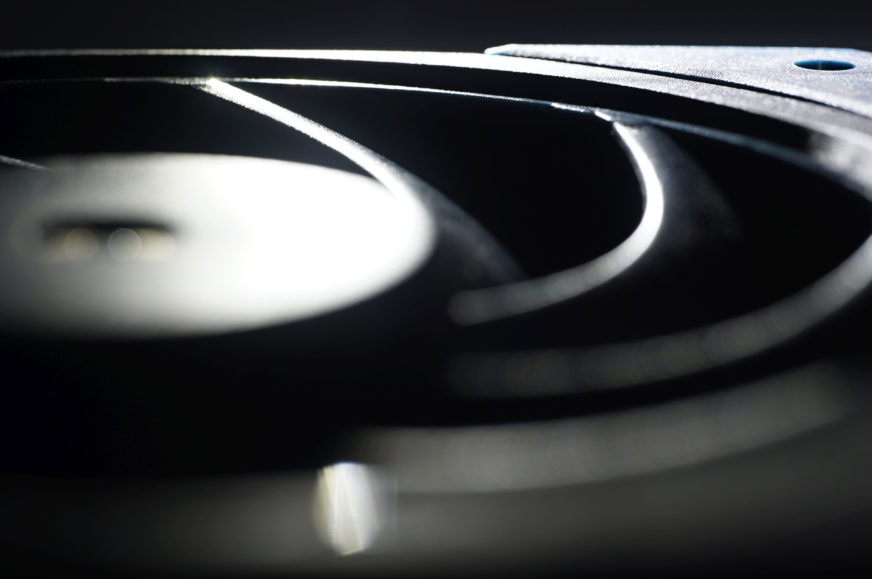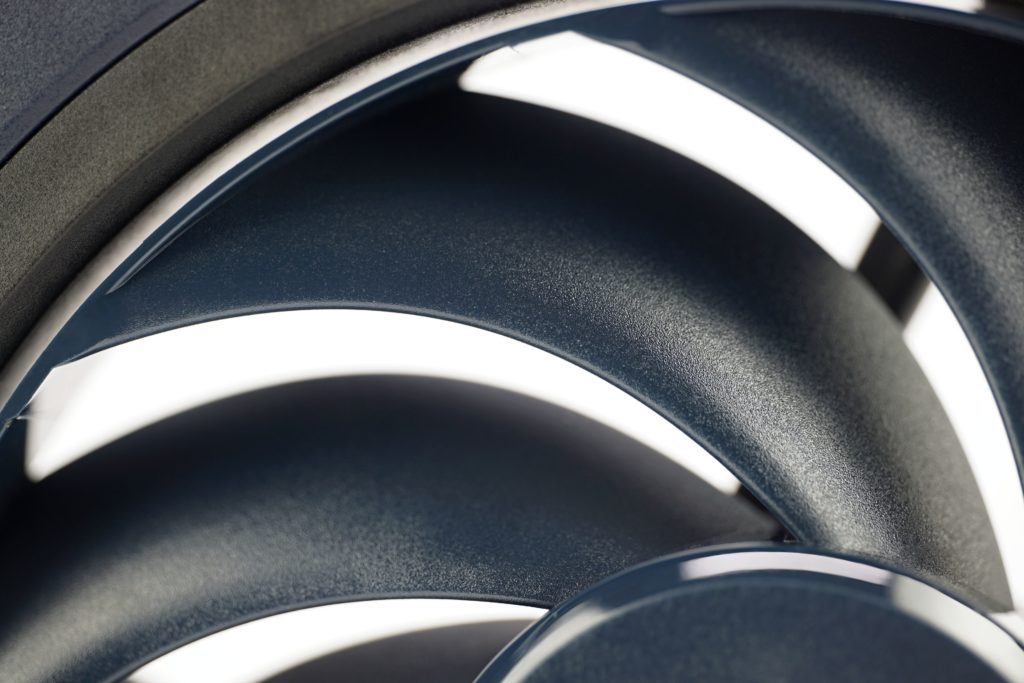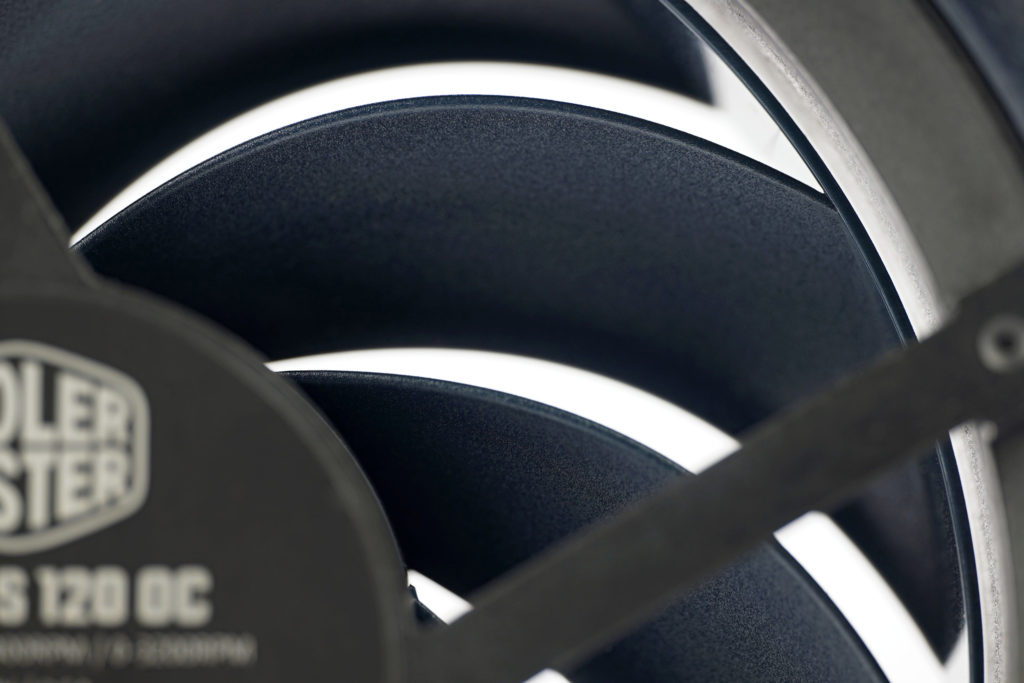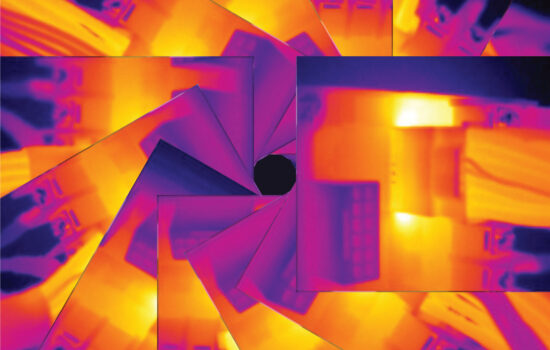Cooler Master Mobius 120 OC in detail
With the Mobius 120 OC fan, Cooler Master could prove that it has worked on and avoided the rookie mistakes of older models. Partly yes, it removed some flaws, but it added (or strengthened) others in the process. Still, the current most expensive 120 mm CM fan has one ace up its sleeve, for which it will be extremely attractive in some use cases. Again, though, this is… how to put it… a somewhat “peculiar” execution.
After the SickleFlow 120 ARGB and the MasterFan SF120M, the Mobius 120 OC is the third Cooler Master which will expand the database of results. We had some complaints about the previous two, and although the aerodynamic design of the rotor was always decent, some of the lower quality features of these fans did not fit the price range they are, or were, in. In fact, the MasterFan SF120M has quietly stopped being sold and has been off the Cooler Master product pages for some time now. However, given the similar price and similar specs of the new Mobius OC fan, it makes sense from the perspective of not having two comparable fans side by side.
The basic shape of the rotor of the Mobius OC replicates the MasterFan SF120M quite closely. With the blades themselves (thinner, but longer – with more pronouncedly curved leading edges), the gaps between them (these are relatively smaller, with the expectation of achieving high static pressure) and finally with the circular frame that is part of the rotor. This is a structural element that mainly stiffens the blade tips and minimises vibrations on them.
Again, however, we have to state what we did with the SF120M. It is a compromise solution and for more expensive fans (and models with a price over 30 EUR can be considered as such) manufacturers should not need to help themselves in this way. We consider the approach of, for example Noctua (on the NF-A12x25) or more recently Lian Li (UNI Fan P28) to be preferable as they use sufficiently rigid materials with similar geometry not to need such a collar around the blades. We like seeing the latter as an improving feature in the lower price class, where the use of thick LCP blades would be unprofitable.
The circular frame as part of the rotor is also useful for preventing the air streams from tearing away from the blade tips, but this too can be done more elegantly. Namely, by reducing the gap between the blade tips while roughening the inner wall of the stator tunnel, i.e. exactly like the Noctua NF-A12x25. There is still a gap between the tunnel and the rotor of the Mobius 120 OC, which reduces the static pressure and thus the airflow with increasing obstacle resistance (for example on a dense radiator). These are already very small details, but even these in the final sum decide how efficient this or that solution is with regard to the lowest possible noise level compared to others.
The surface of the blades of the Mobius 120 OC is smooth and matte on both sides. On the MasterFan SF120M, the blades were patterned with irregular grooves in the front and perfectly smooth with a mirror effect in the rear. The frame design is very similar – extremely robust. With a weight of approximately 211 grams, this is one of the heaviest 120 mm fans. The corners alone are 60 grams. These are screwed on to the frame, but the more important note is their high hardness. Compared to the frame, they are indeed a bit softer, but they have virtually no effect on vibration dampening.
Similar to the SF120M, the Mobius 120 OC has a speed limiter that can reduce the maximum, very high, approximately 3285 rpm (H/High – the switch’s default position) due to 100% PWM control to approximately 2476 rpm (M/Medium) or approximately 1587 rpm (L/Low). The placement of the switch on the cable is to be commended here, as it is considerably more accessible than on the SF120M. At first glance it may look a bit clumsy as there are two cables coming out of the fan, but this switch is securely clipped on the PWM cables and nothing is getting loose anywhere. That’s also thanks to the Velcro pull-tab, the position of which you can change in various ways to suit your needs. The length of the cable with a 4-pin connector is otherwise average, 30 cm.
- Contents
- Cooler Master Mobius 120 OC in detail
- Overview of manufacturer specifications
- Basis of the methodology, the wind tunnel
- Mounting and vibration measurement
- Initial warm-up and speed recording
- Base 6 equal noise levels…
- ... and sound color (frequency characteristic)
- Static pressure measurement…
- … and airflow
- Everything changes with obstacles
- How we measure power draw and motor power
- Measuring the intensity (and power draw) of lighting
- Results: Speed
- Results: Airlow w/o obstacles
- Results: Airflow through a nylon filter
- Results: Airflow through a plastic filter
- Results: Airflow through a hexagonal grille
- Results: Airflow through a thinner radiator
- Results: Airflow through a thicker radiator
- Results: Static pressure w/o obstacles
- Results: Static pressure through a nylon filter
- Results: Static pressure through a plastic filter
- Results: Static pressure through a hexagonal grille
- Results: Static pressure through a thinner radiator
- Results: Static pressure through a thicker radiator
- Results: Static pressure, efficiency by orientation
- Reality vs. specifications
- Results: Frequency response of sound w/o obstacles
- Results: Frequency response of sound with a dust filter
- Results: Frequency response of sound with a hexagonal grill
- Results: Frequency response of sound with a radiator
- Results: Vibration, in total (3D vector length)
- Results: Vibration, X-axis
- Results: Vibration, Y-axis
- Results: Vibration, Z-axis
- Results: Power draw (and motor power)
- Results: Cooling performance per watt, airflow
- Results: Cooling performance per watt, static pressure
- Airflow per euro
- Static pressure per euro
- Results: Lighting – LED luminance and power draw
- Results: LED to motor power draw ratio
- Evaluation


















I found your website in the course of my accidental search, the evaluation is detailed and respectful, I have a certain demand for RGB now, and Cooler Master said that the performance of mobius 140 ARGB is very powerful, there are too few evaluations now, I hope you can give it a look Make a review, many thanks.
We will gradually test all available fans. Only those that will stop selling over time will be unlucky (or lucky, depending on your point of view…).
We are excited to have a new reader. We welcome you dearly. 🙂
For the price, there are unfortunately too many flaws. The only application where the fan is strong is running at full speed disregarding noise, and even at that niche, the 12 cm Silent Wings Pro 4 is very close (and I would expect extremely tough competition from Phanteks T30 and Lian Li P28 as well). The poor PWM implementation on a modern fan is also very puzzling to me, especially at that price point.
The fan could be interesting server-grade solution. Maybe next time, I mean with ultra-long-life bearings and without vibrations.
I also tested Mobius 120 OC on thinner radiator recently, I can say this fan is one of the worst choice at its price.
There are many products on the market that obviously surpass Mobius 120 OC.
In terms of maximum airflow and price, Sanyo Denki 9G1212P4H06-4P, Thermalright TL-B12 EXTREM, Arctic P12 Max can perfectly replace Mobius 120 OC.
In terms of noise-airflow efficiency, PH-F120T30, NF-A12X25 and SW Pro 4 definitely outperform it.
Unlike Mobius 120(P), Mobius 120 OC seems difficult to survive the competition.
Thanks for the cross-verification of the results. 🙂
Actually I doubted my result of Mobius 120 OC because it showed 20%p lower noise-airflow efficiency than PH-F120T30, which was unbelievably poor result for an expensive fan. Now the cross-validation is possible with your thinner radiator test, and the two results are showing similar tendency about the fan. Thanks a lot!
I would LOVE to see you review the regular (non OC) Mobius fans. Particularly the 120p RGB version. It would be interesting to see just how close or far away from the OC performance they are.
Thanks for the tip. As long as the Mobius 120P RGB doesn’t stop selling before we can get our hands on it, we’ll be sure to include it in our tests. Gradually all fans available in the shops will be put in a confrontation. 😉